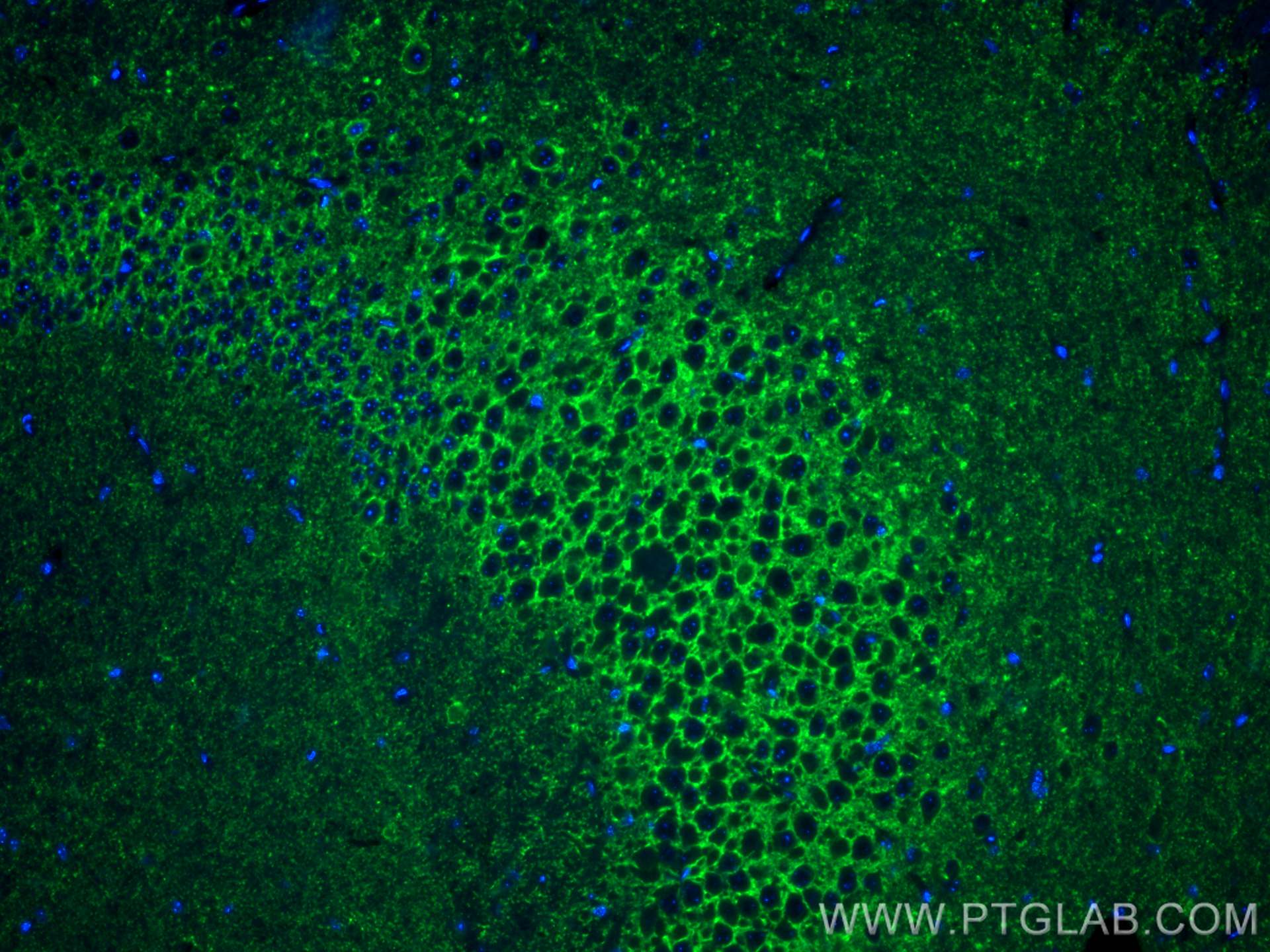验证数据展示
经过测试的应用
| Positive IF-P detected in | mouse brain tissue |
推荐稀释比
| 应用 | 推荐稀释比 |
|---|---|
| Immunofluorescence (IF)-P | IF-P : 1:50-1:500 |
| It is recommended that this reagent should be titrated in each testing system to obtain optimal results. | |
| Sample-dependent, Check data in validation data gallery. | |
产品信息
CL488-14471 targets SLC32A1/VGAT in IF-P applications and shows reactivity with human, mouse, rat samples.
| 经测试应用 | IF-P Application Description |
| 经测试反应性 | human, mouse, rat |
| 免疫原 |
CatNo: Ag5843 Product name: Recombinant human SLC32A1 protein Source: e coli.-derived, PGEX-4T Tag: GST Domain: 1-124 aa of BC053582 Sequence: MATLLRSKLSNVATSVSNKSQAKMSGMFARMGFQAATDEEAVGFAHCDDLDFEHRQGLQMDILKAEGEPCGDEGAEAPVEGDIHYQRGSGAPLPPSGSKDQVGGGGEFGGHDKPKITAWEAGWN 种属同源性预测 |
| 宿主/亚型 | Rabbit / IgG |
| 抗体类别 | Polyclonal |
| 产品类型 | Antibody |
| 全称 | solute carrier family 32 (GABA vesicular transporter), member 1 |
| 别名 | SLC32A1, VGAT, VIAAT, Vesicular GABA transporter, hVIAAT |
| 计算分子量 | 57 kDa |
| 观测分子量 | 57 kDa |
| GenBank蛋白编号 | BC053582 |
| 基因名称 | VGAT |
| Gene ID (NCBI) | 140679 |
| RRID | AB_3672590 |
| 偶联类型 | CoraLite® Plus 488 Fluorescent Dye |
| 最大激发/发射波长 | 493 nm / 522 nm |
| 形式 | Liquid |
| 纯化方式 | Antigen affinity purification |
| UNIPROT ID | Q9H598 |
| 储存缓冲液 | PBS with 50% glycerol, 0.05% Proclin300, 0.5% BSA, pH 7.3. |
| 储存条件 | Store at -20°C. Avoid exposure to light. Stable for one year after shipment. Aliquoting is unnecessary for -20oC storage. |
背景介绍
SLC32A1, also known as VGAT (vesicular GABA transporter), functions in the uptake of GABA and glycine into synaptic vesicles. GABA (gamma-aminobutyric acid), is the major inhibitory neurotransmitter in the CNS. VGAT transports GABA and glycine into acidic vesicles and localizes to the synaptic vesicle in glycinergic and GABAergic neurons. And VGAT antibodies are useful markers for presynaptic GABAergic and glycinergic neurons.
实验方案
| Product Specific Protocols | |
|---|---|
| IF protocol for CL Plus 488 SLC32A1/VGAT antibody CL488-14471 | Download protocol |
| Standard Protocols | |
|---|---|
| Click here to view our Standard Protocols |


